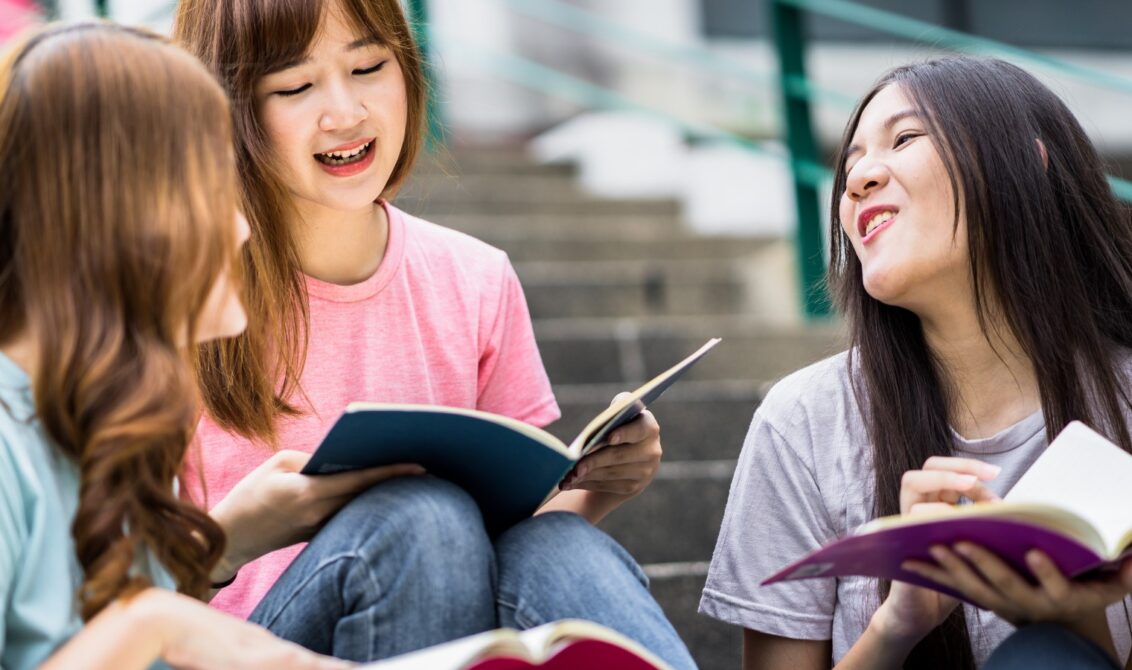
Teaching is one of the caring professions. Teachers are deeply invested in their students’ happiness and wellbeing – it comes with the territory.
That’s why so many educators are concerned by the widespread issues of anxiety and stress in students. In a recent survey of 6,000 college students and parents of school age children, 63% of parents and 69% of students agreed that the disruption of education contributed to anxiety, stress levels and mental health issues.
Bristol University’s happiness course
These issues already existed pre-pandemic – and it was against this backdrop that the University of Bristol launched their happiness course. They wanted to see what happened when students combined positive psychology theory with practical steps to maximise their own happiness. The results were impressive. Students who enrolled on the happiness course had significantly higher wellbeing by the end of the course than a control group.
What is ‘wellbeing’?
Wellbeing is a term that is thrown around a lot – but what exactly does it mean? The WHO defines wellbeing as “a state in which the individual realises his or her own abilities, can cope with the normal stressors of life, can work productively and fruitfully and is able to make a contribution to his or her community.”
Making happiness a priority for your students will improve their wellbeing and make them more resilient, equipping them to face the inevitable challenges and pressures of learning, studying and sitting exams.
So what can we learn from the psychoeducational course run at Bristol University? And which activities can we adapt for our own classrooms, to build student wellbeing and prioritise their happiness?
1. Teach your students about the science of happiness
Learning about the psychological theories and the neuroscience of happiness can encourage your students to reflect on their own wellbeing, developing their emotional intelligence and emotional literacy.
Emotional intelligence is a factor when it comes to overall wellbeing, and an important tool when developing 21st century skills such as teamwork, collaboration and leadership. Working on their emotional intelligence now will provide your students with an important foundation to build on later, at university and in the workplace.
So, before you start making practical suggestions to your students, teach them a bit about why these activities are important and the difference they can make. Learning about the neuroscience of positive actions will help students to overcome any initial reluctance in the spirit of scientific observation.
There are lots of free courses available online for you to get inspired by!
2. Performing acts of kindness
Acts of kindness make everyone happier. They improve the wellbeing of the person being kind, the beneficiary of their kindness, and even bystanders who witness the kind interaction, causing a ripple effect through your community. As such, performing an act of kindness can give your students an immediate happiness boost.
Get your students to come up with some ideas for acts of kindness they could carry out. You could create categories based on locations: school, home, out and about. Or, you could ask them to suggest acts based on the recipients: family members, friends, classmates and teachers, or strangers. Here are some suggestions to get them started:
- Offer to carry an older person’s groceries to their car.
- Write the cafeteria staff a thank you note.
- Offer to cook dinner at home.
- Share class notes with a classmate.
- Buy a book for a friend.
- Give up your seat on public transport.
Keep a note of the best suggestions. That way, you’ll have a list of kind acts which your students can use as inspiration throughout the year.
3. Practising mindfulness
Mindfulness is all about being present in the moment – a skill which helps people to disconnect from social media and other digital distractions, and truly enjoy whatever activity they are engaged in, or experience they are having.
So how can you encourage your students to practise mindfulness? Try to build a few moments of mindfulness practice into your classroom routine each day. You could encourage your students to create a positive affirmation to focus on, or do a breath counting exercise. Our blog post on practising mindfulness in the classroom has lots of practical suggestions!
4. Seeking out social interactions
Interacting with strangers can be difficult for adults, never mind teenagers. But research shows that striking up a conversation with strangers can have a big impact on our mood. Teenagers are awkward, but developing the ability to make small talk with strangers will help them feel happier in the moment, as well as building their social skills and confidence in the long term.
Set your students a challenge to interact (safely) with a stranger. Ask them to suggest some suitable contexts, and provide them with a list of additional suggestions if they’re struggling:
- Talk to an old person who lives in their neighbourhood.
- Give the cashier at their supermarket a compliment.
- Ask someone for directions.
- Strike up a conversation with someone on a bus or train.
After the conversation, encourage them to reflect on their feelings, what worked, and how they could improve the interaction the next time.
5. Writing a letter of gratitude
This can dovetail nicely with writing practice, and is considered a powerful exercise by positive psychology experts.
Ask your students to think of someone they are grateful to. This could be a family member who has supported them, or someone in their community who has helped them or inspired them in some way. The letter doesn’t need to be pages long. Just a few paragraphs will do!
What’s more, the act of writing a gratitude letter has a powerful effect not only on the happiness of the writer, but also of the person who receives the letter. That’s two good moods for the price of one!
Further reading
Read the full Global Learner Survey report in detail. Learn more about promoting kindness in your classroom, and have a look at some mindfulness resources.
Sign up to receive our blog updates
Like what you read and want to receive more articles like this direct to your inbox? Subscribe to our blog and we’ll send you a fortnightly digest of the blog posts you may have missed, plus links to free resources to support your teaching and learning.

